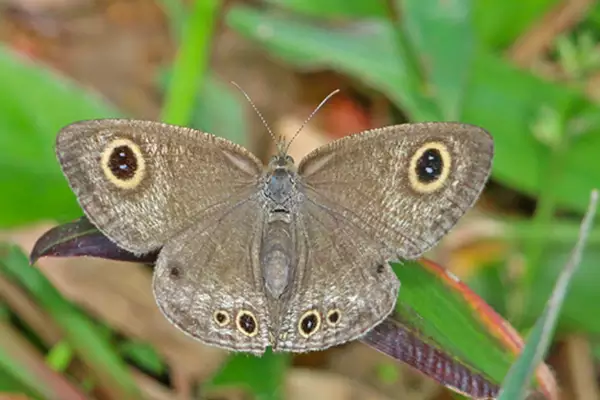The four-ringed butterfly (Ypthima cantliei), has been rediscovered in Namdapha National Park, the easternmost tiger reserve in India, located in Arunachal Pradesh, after a gap of 61 years.
About the Four-ringed butterfly:
- Species: Great Four-ring (Ypthima cantliei), a member of the Satyrinae subfamily.
- Appearance: The butterfly has dull brown-grey wings with 3 yellow-ringed eye spots on the hind wing and a bi-pupilled apical ocellus on the forewing.
About butterfly:
- Order: Lepidoptera.
- Habitats: Found in nearly all types of habitats; some spend part of their lives underground.
- Special Note: Monarch butterflies possess toxins in their wings.
Significance of Butterfly:
- Role in Ecosystem:
- Pollination: Butterflies are crucial for pollinating various plants.
- Food Chain: Serve as prey for birds, bats, and other insectivores.
- Conservation Importance: Butterflies are considered flagship species for invertebrate conservation.
Ref: Source
| UPSC IAS Preparation Resources | |
| Current Affairs Analysis | Topperspedia |
| GS Shots | Simply Explained |
| Daily Flash Cards | Daily Quiz |
Frequently Asked Question:
What is the scientific name of the four-ringed butterfly?
The scientific name of the four-ringed butterfly is Ypthima cantliei.
Where was the four-ringed butterfly rediscovered after 61 years?
The four-ringed butterfly was rediscovered in Namdapha National Park in Arunachal Pradesh, India.
What is the appearance of the four-ringed butterfly?
The four-ringed butterfly has dull brown-grey wings with 3 yellow-ringed eye spots on the hind wing and a bi-pupilled apical ocellus on the forewing.
What is the role of butterflies in the ecosystem?
Butterflies play a crucial role in pollination and are also an important food source for birds, bats, and other insectivores.
Why are butterflies considered flagship species for conservation?
Butterflies are considered flagship species for invertebrate conservation because of their important role in the ecosystem and their significance in helping to maintain biodiversity.



